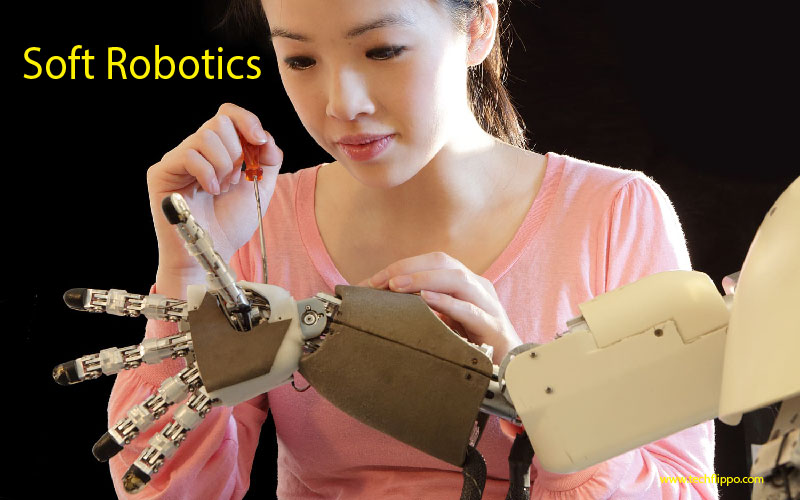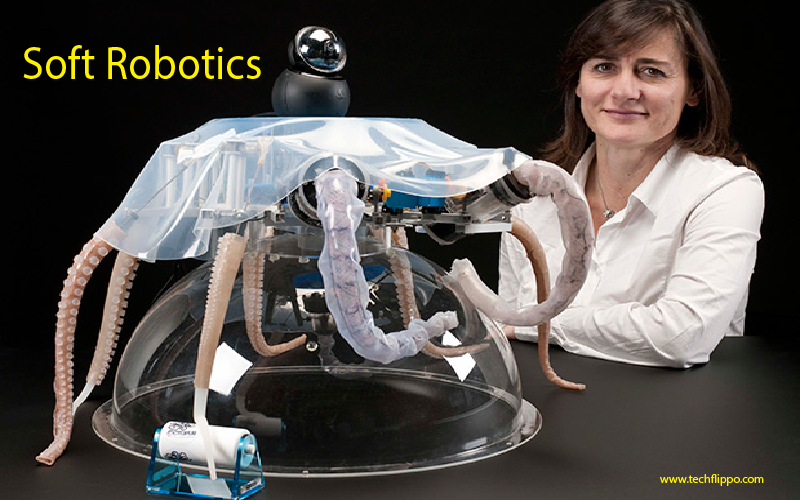The Beauty of Soft Robotics
Welcome to the fascinating world of Soft Robotics, where innovation meets flexibility! Imagine robots made not of rigid metals and hard plastics, but of soft, pliable materials that mimic the adaptability and dexterity of living organisms. This cutting-edge field is revolutionizing industries from healthcare to manufacturing, offering a new frontier in robotics technology. Join us as we delve into the beauty of Soft Robotics and discover how it is reshaping the way we interact with machines.

What is Soft Robotics?
Soft Robotics is a branch of robotics that focuses on creating robots made from highly flexible and deformable materials. Unlike traditional rigid robots, soft robots are designed to move and interact with their environment in a more organic and lifelike manner. These innovative machines are inspired by the flexibility and adaptability found in nature, such as the movements of octopuses or worms.
The materials used in Soft Robotics can include silicone, rubber, or even textiles, allowing for fluid motion and safe interaction with humans. By utilizing soft actuators and sensors, these robots can perform delicate tasks with precision while also being gentle enough to work alongside people without causing harm.
One key aspect of Soft Robotics is its ability to navigate complex environments where traditional robots may struggle. This field opens up new possibilities for applications in areas such as medical robotics, wearable devices, and assistive technologies. With its focus on versatility and safety, Soft Robotics is paving the way for a future where machines seamlessly integrate into our daily lives.
Advantages of Soft Robotics
Soft robotics offers a range of advantages that set it apart from traditional rigid robots. One key benefit is its ability to interact safely with humans and delicate objects due to their soft and flexible nature. This makes them ideal for tasks where close human-robot collaboration is required, such as in healthcare settings or assisting the elderly.
Moreover, soft robots can adapt to complex environments more easily than their rigid counterparts. Their flexibility allows them to navigate obstacles and uneven terrain with greater agility, opening up new possibilities for applications in search and rescue missions or exploration in harsh conditions.
Another advantage of soft robotics is their potential for cost-effective manufacturing. The materials used in soft robots are often cheaper than traditional metal components, making them more accessible for research labs, startups, and educational institutions looking to experiment with robotic technology.
In addition, the compliance and dexterity of soft robots enable them to perform tasks with a level of precision that is difficult to achieve with rigid robots. This opens up opportunities for applications requiring gentle manipulation or intricate movements, such as in surgery or assembly lines.
Applications of Soft Robotics
Soft robotics, with its gentle and adaptable nature, has found a wide array of applications across various industries. In the medical field, soft robots are revolutionizing surgeries by providing precise and minimally invasive procedures. These robots can navigate delicate tissues with ease, reducing the risk of complications during operations.
In the field of exploration, soft robotics are being used to create agile and flexible robotic systems for navigating challenging terrains like rugged landscapes or even underwater environments. Their ability to deform and conform to their surroundings makes them ideal for tasks that traditional rigid robots struggle to accomplish.
Furthermore, in manufacturing processes, soft robots are streamlining production lines by handling fragile objects with care and precision. Their dexterity allows them to perform intricate tasks such as assembling small electronic components or packaging delicate goods efficiently.
The diverse applications of soft robotics continue to expand as researchers explore new ways to harness their unique capabilities across different sectors.
Impact on Different Industries
Soft robotics has revolutionized various industries, showcasing its versatility and adaptability in different settings. In the medical field, soft robots have opened up new possibilities for minimally invasive surgeries, allowing for more precise and less traumatic procedures. These robots can navigate delicate tissues with ease, reducing patient recovery times significantly.
In manufacturing and automation, soft robotics offer flexibility and safety advantages over traditional rigid robots. They can handle fragile objects without causing damage, leading to increased efficiency on production lines. The agricultural sector benefits from soft robotic grippers that can handle fruits and vegetables gently, minimizing waste in the harvesting process.
The exploration of underwater environments has also been transformed by soft robotics technology. Soft-bodied robots can maneuver through tight spaces with agility, collecting data or performing tasks that were previously inaccessible to conventional rigid machines. Industries such as construction and logistics are exploring how soft robotics can enhance their operations through improved dexterity and reduced risks of accidents.
The impact of soft robotics on different industries is vast and continues to evolve as researchers push boundaries in innovation and application areas.

Challenges and Limitations
Soft robotics, while incredibly promising, face challenges and limitations that need to be addressed for further advancement. One major challenge is the lack of standardized design and manufacturing processes for soft robotic components. This variability can hinder scalability and reproducibility in production.
Another obstacle is the complexity of control systems for soft robots. Due to their flexible nature, controlling movements with precision can be a daunting task. Additionally, durability remains a concern as soft materials may degrade over time or under certain conditions.
Integration with traditional rigid robotics also poses challenges in terms of compatibility and interoperability. Ensuring seamless collaboration between these two types of robots requires innovative solutions and careful planning.
Overcoming these challenges will require interdisciplinary collaboration and continuous research efforts within the field of soft robotics.
Future Developments in Soft Robotics
The field of soft robotics is rapidly evolving, with exciting advancements on the horizon. Researchers are exploring new materials and manufacturing techniques to enhance the capabilities of soft robots. By incorporating artificial intelligence and machine learning algorithms, future soft robots will be able to adapt and learn from their environments in real-time.
One promising area of development is the integration of sensors that can provide feedback for more precise movements and interactions. This could open up possibilities for applications in healthcare, such as minimally invasive surgeries or personalized rehabilitation devices. Additionally, advancements in soft grippers and actuators may revolutionize industries like agriculture by improving efficiency and reducing waste.
As researchers continue to push boundaries in material science and bio-inspired design, we can expect to see a proliferation of innovative soft robotic solutions across various sectors. The future of soft robotics holds tremendous potential for transforming how we interact with technology and the world around us.
Conclusion
Soft robotics represents a groundbreaking field that is revolutionizing the way robots interact with their environments. By drawing inspiration from nature and utilizing flexible materials, soft robotics offers a myriad of benefits and applications across various industries. Despite facing challenges and limitations, ongoing advancements in technology are paving the way for even more innovative developments in the future. As we continue to explore the beauty of soft robotics, one thing is certain – this emerging technology has the potential to shape our world in ways we have yet to fully comprehend. So, embrace the soft robotic revolution and witness firsthand how these gentle giants are transforming our lives for the better.